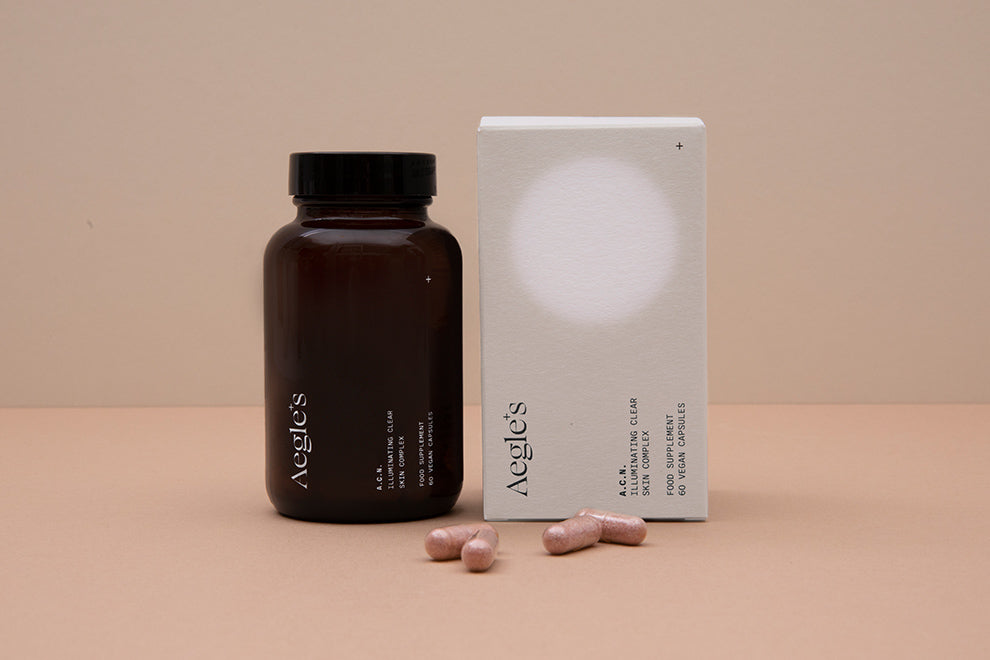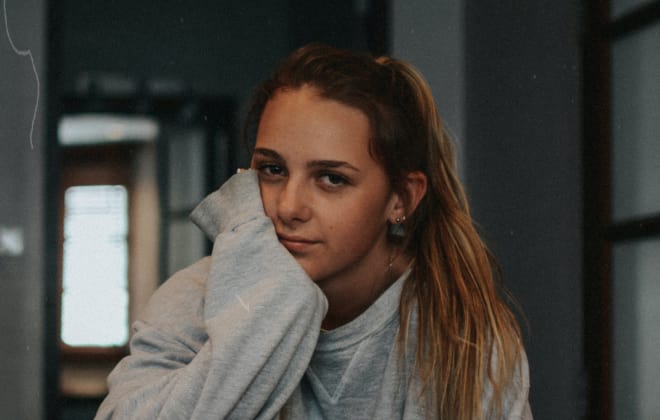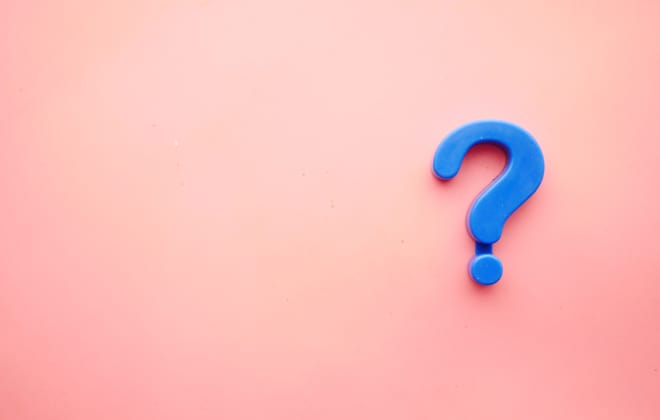

Acne is commonly associated with red, inflamed pimples on the face, but it actually comes in many forms that can affect different areas of the body. From painful cystic acne to small whiteheads, each type has its own distinct characteristics and challenges. In this guide, we'll explore the various types of acne and help you identify the specific type you may be dealing with.
Non-inflammatory acne is characterised by the lack of redness, swelling, and inflammation, as it doesn't involve acne-causing bacteria. Typically milder than inflammatory acne, it is often easier to manage with topical treatments.
Blackheads & Whiteheads
Whiteheads and blackheads are the two main types of non-inflammatory acne, also known as comedones. Whiteheads form when a pore becomes clogged with oil and dead skin cells, with the pore's opening remaining closed. Blackheads, on the other hand, occur when the clogged pore remains open, allowing the oil and dead skin cells to oxidize, which gives blackheads their characteristic dark appearance.
Inflammatory acne is characterised by red, swollen, and painful bumps on the skin. These bumps result from inflammation in the hair follicles, usually triggered by excess sebum production combined with acne-causing bacteria.
Unlike non-inflammatory acne, such as blackheads and whiteheads—which are typically not painful—inflammatory acne can be quite uncomfortable and may even lead to scarring if left untreated. Proper diagnosis and treatment are essential to prevent the condition from worsening and causing long-term damage to the skin.
Acne Mechanica
Acne mechanica is a type of acne caused by friction, pressure, or rubbing of the skin. It commonly affects athletes or individuals who wear tight clothing or equipment that irritates the skin. This condition is characterised by small, red, inflamed bumps, often accompanied by itching or discomfort. The lesions typically appear on areas of the skin that are in constant contact with the irritating material, such as the forehead, shoulders, and back.
Acne Rosacea
Acne rosacea is a type of rosacea that primarily affects the face. It is characterised by redness, inflammation, and small bumps or pustules that may resemble bacterial acne. The condition typically affects adults between the ages of 30 and 50, and it is more common in women than men. The exact cause of acne rosacea is unknown, but it is believed to result from a combination of genetic factors, allergies, and sun exposure. Triggers such as sun exposure, stress, spicy foods, alcohol, and hot beverages can worsen symptoms.
Bacterial acne, also known as acne vulgaris, is caused by a buildup of bacteria on the skin. The bacteria responsible for acne, Propionibacterium acnes, is naturally present on the skin but can multiply rapidly when there is excess oil production. Bacterial acne typically appears as inflamed, red, and pus-filled pimples. While it can occur on any part of the body, it is most commonly found on the face, chest, shoulders, and back.
Papules
Papules are small, red, inflamed bumps that are typically tender to the touch. They occur when the walls of the hair follicle become inflamed, causing the pore to become blocked. Unlike pustules, papules are not filled with pus, but they can be painful and may lead to scarring if left untreated. This type of acne is most commonly found on the cheeks or forehead.
Pustules
Pustules are similar to papules, but they are filled with pus. Typically larger than papules, pustules have a white or yellow centre. They can be painful and may leave scars if squeezed or picked.
Nodules
Nodules are large, painful, solid bumps located deep beneath the skin. They occur when the hair follicle wall ruptures, causing bacteria, oil, and dead skin cells to spread into the surrounding tissue. Nodules can be very painful and may result in scarring if left untreated.
They typically appear on larger areas such as the chest and back, but can also form on the face. Nodules may remain on the skin for weeks or even months.
Cysts
Cysts are a severe form of acne. They are large, painful, and filled with pus. Cysts form when bacteria, oil, and dead skin cells deep within the skin create a pocket or sac. They can be extremely painful and may lead to scarring if left untreated.
Cystic acne often appears on the lower half of the face and can be a strong indicator of a hormonal imbalance in women.
Acne conglobata
Acne conglobata is a severe form of acne characterised by deep, inflamed, and interconnected nodules and abscesses. It is a chronic condition that most often affects men and is commonly linked to genetics and hormonal imbalances.
The lesions of acne conglobata typically appear on the face, chest, back, and buttocks. They can be extremely painful and may lead to scarring and disfigurement. In some cases, the condition is accompanied by systemic symptoms such as fever and joint pain.
Severe nodulocystic acne
Severe nodulocystic acne is a type of acne that involves deep, painful nodules and cysts beneath the skin’s surface. It is considered the most severe form of acne and can lead to scarring and permanent skin damage if left untreated. This condition is often genetic but can also be triggered by hormonal imbalances or certain medications. It is more common in men than women and typically appears on the face, chest, and back.
Unlike traditional acne, which is caused by bacteria, fungal acne is caused by a type of yeast called Malassezia, which is normally present on the skin but can overgrow under certain conditions, such as excess oil or sweat. Fungal acne typically appears as small, red bumps that are often itchy, and it can occur on the forehead, chest, back, and shoulders.
Fungal acne does not respond to traditional acne treatments because its root cause is different. Treatment requires addressing the fungal overgrowth both internally and externally.

Start your journey to heal your skin now.
- Contains ingredients clinically proven to improve blemishes and skin radiance.
- Formulated by one of the world's leading skin practitioners.
- The only supplement that works for the three main causes of blemishes, blackheads and oily skin.






